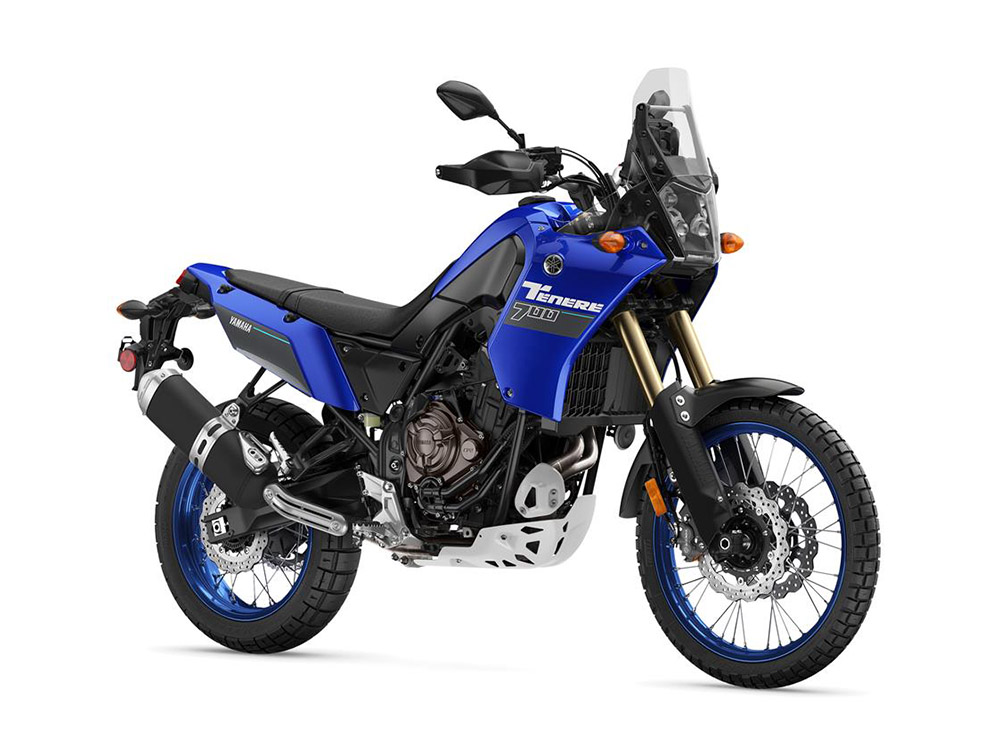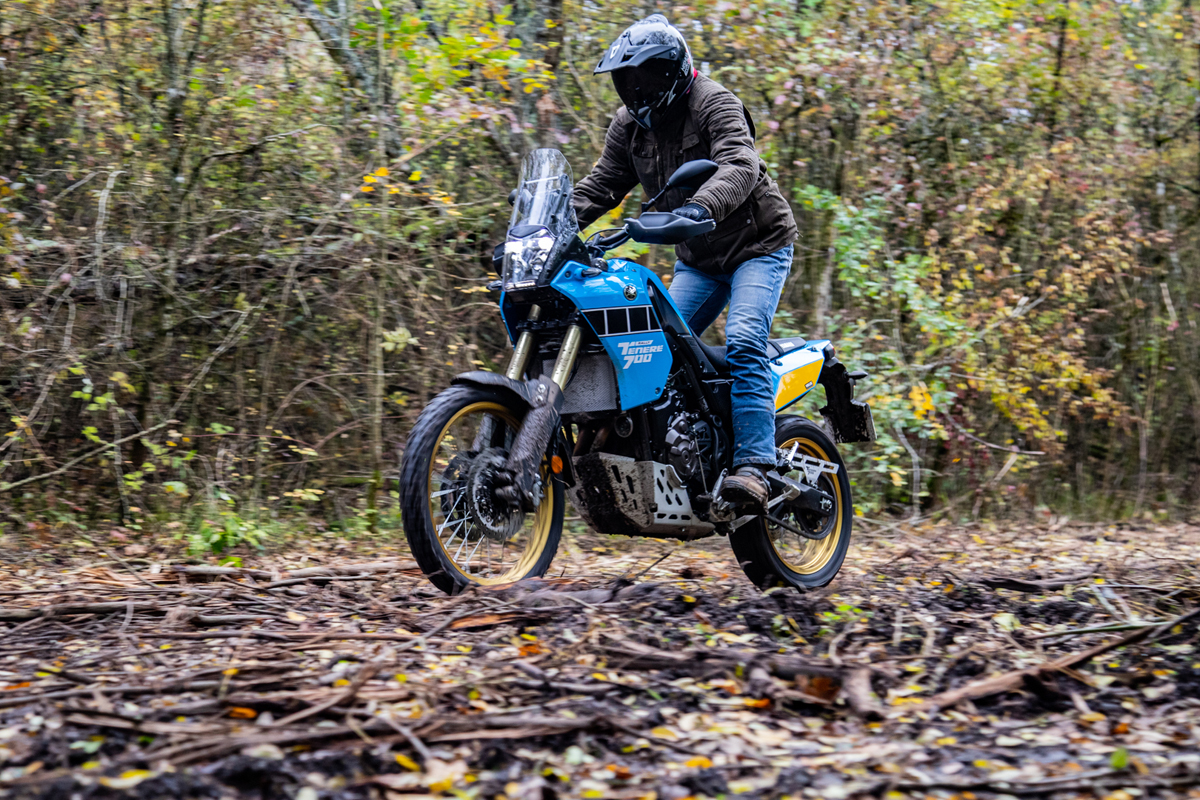
The new Yamaha Ténéré 700 bears a legendary name—but does this much-hyped adventure bike live up to the legacy of the original 80s legend? Our man in Europe, Philippe Guillaume, managed to get a long ride in the French winter to find out.
Anyone in their early fifties, like yours truly, probably once dreamt of the 1983 Yamaha Ténéré 600. When Yamaha released the bike, with its 30-litre fuel tank, mono-shock rear end and thick seat, the bike screamed: “I want to go across Africa!” The Ténéré got even better in 1986, with a 46 hp engine and an electric start.
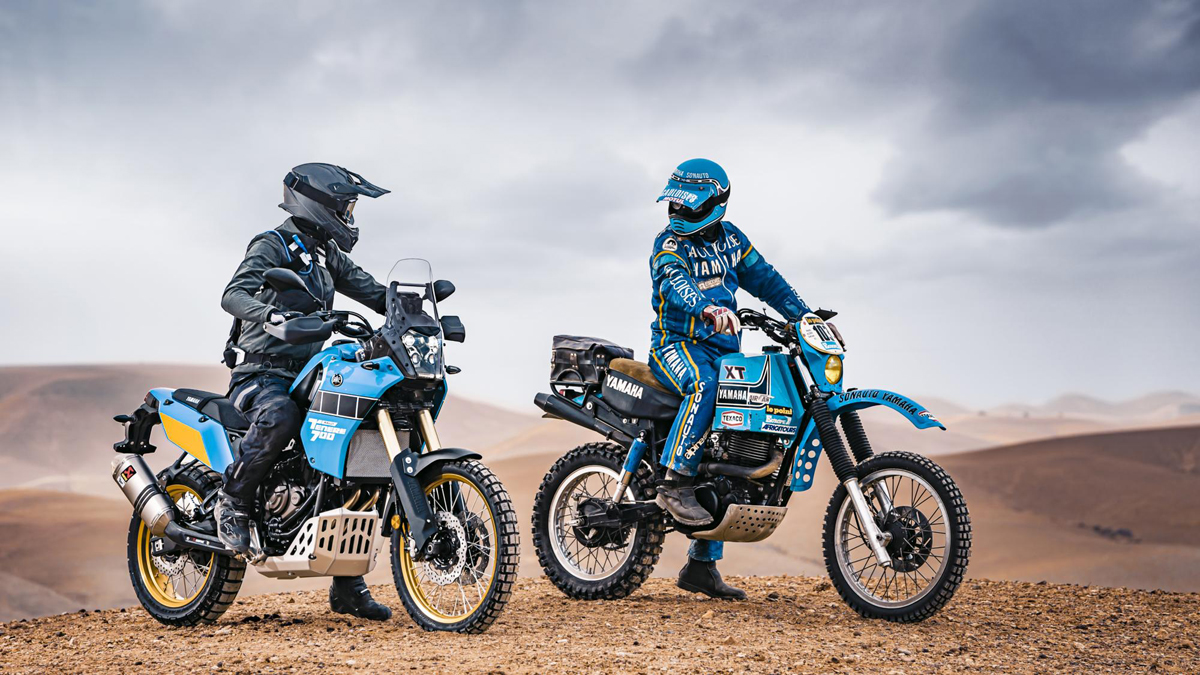
For some, the 1988 ‘3AJ’ model is the apex of the species; a fairing with two round headlights added some comfort, while a disc brake at the back made it safer. From then on, the Ténéré went downhill. The liquid-cooled 1991-model was too sophisticated for some, heavy, and a bit visually dull.
No doubt: the original Ténéré was the right bike at the right time. But that’s because the groundwork had already been laid. Back in 1976, the Yamaha XT500 was a revolution—first winning the Abidjan-Nice Rally in 1977, then the Paris-Dakar in 1979 and 1980. So by the time the Ténéré came out, it was plain sailing.
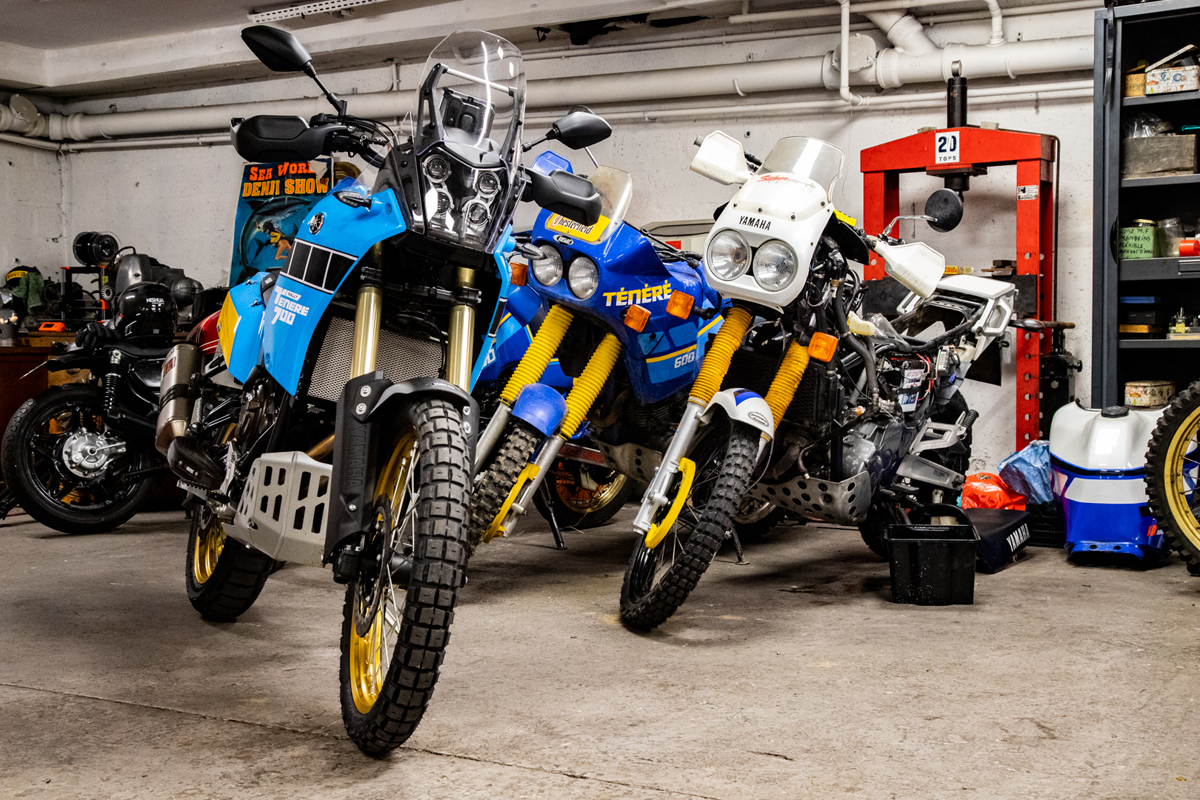
But then the adventure bike market went mad. More power, more weight, more sophistication, more money. Even the 170 hp Multistrada V4 is considered a ‘dual sport’ bike these days. If that sounds crazy to you, the Ténéré 700 is Yamaha’s answer.
After a painfully long tease, the ‘T7’ has finally hit our shores. And on paper, it’s a winner; a new chassis, modern rally styling, and the motor from the ultra-popular MT-07 family.
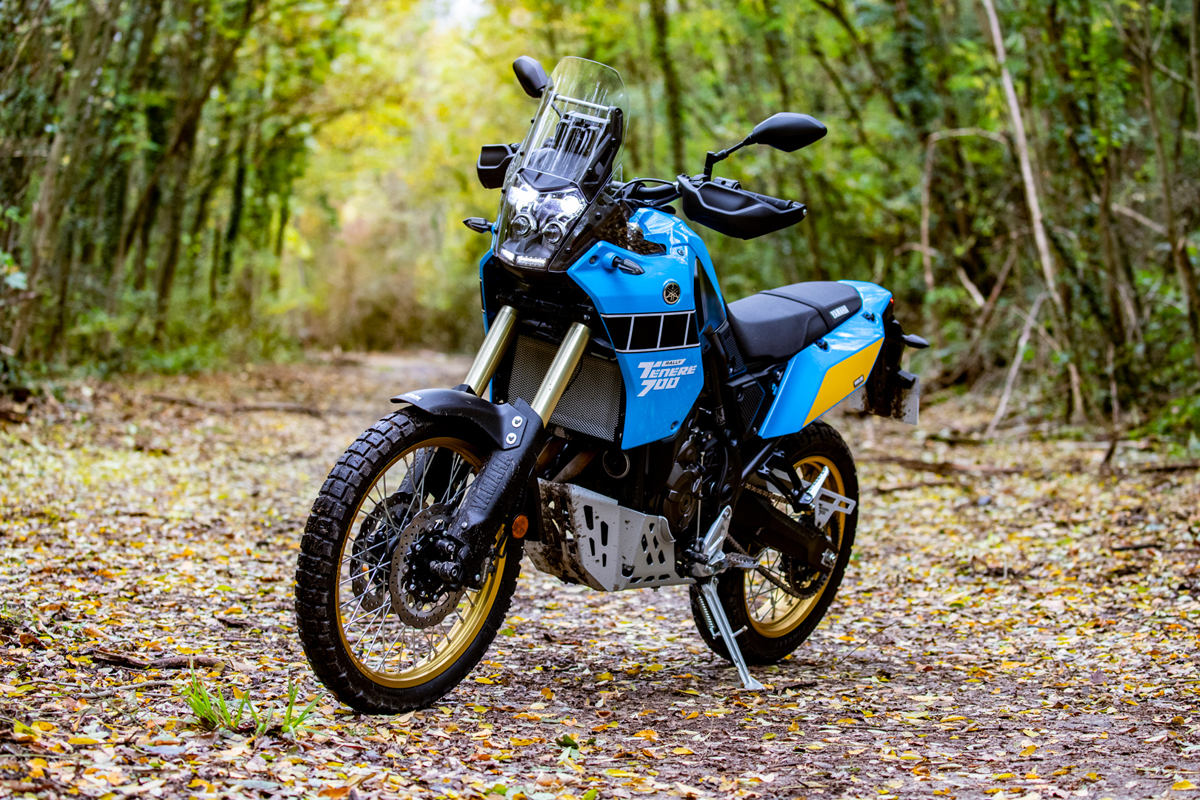
And that’s a very good thing—the ‘CP2’ parallel twin is a peach, and more than capable (unless you plan to fly across the Makgadikgadi pans over 180 km/h). With 72 hp and 68 Nm on tap, cruising at highway speeds is a piece of cake. And its smoothness and ability to handle low revs with grace make it great for commuting duty.
A touch of blue
The Ténéré 700 pictured here is the Rally Edition—a special edition that costs an extra €1,800 in Europe, but is sadly not available in South Africa. You get the historical blue ‘speed blocks’ paint scheme, a special enduro seat, and one very nice looking Akrapovič exhaust (which is actually not much noisier). There’s also a thicker aluminium bash-plate, an aluminium chain guard and radiator cover, off-road grips, LED indicators and a nice set of Pirelli Scorpion MTR tyres.
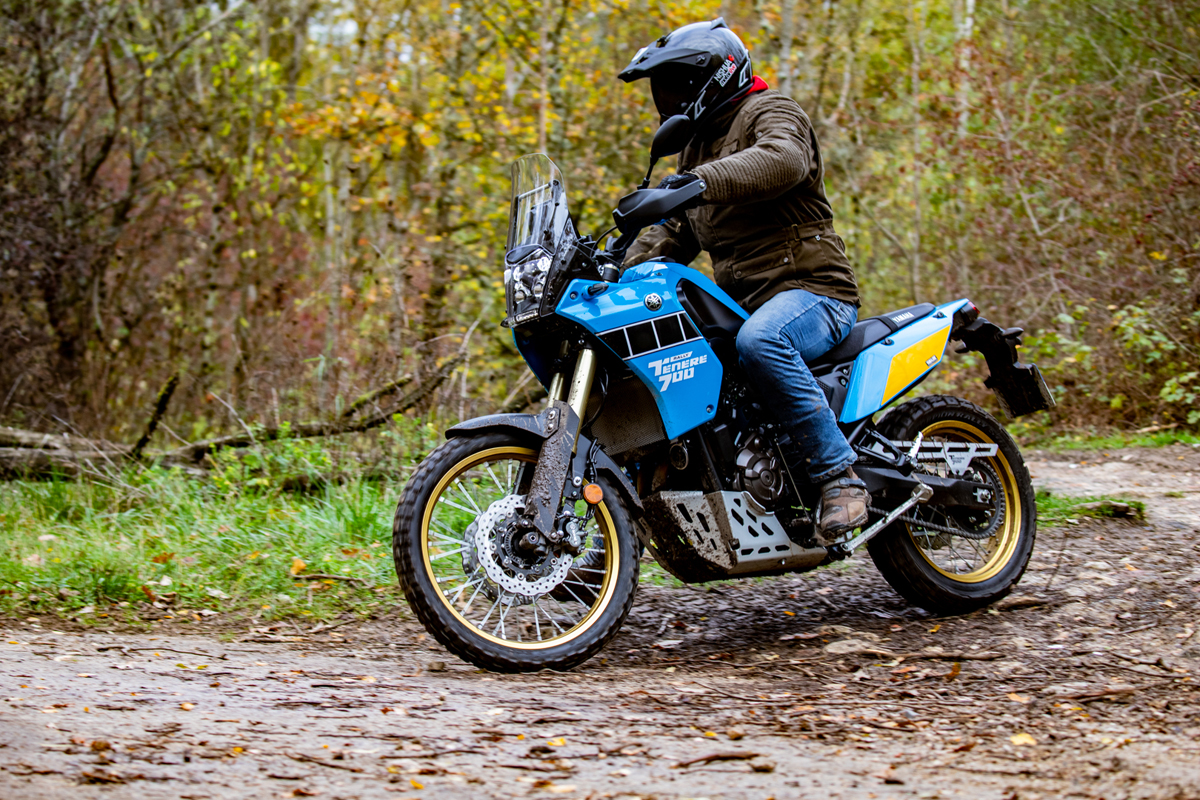
Otherwise, it’s pretty much identical to the base model Ténéré, except that the new seat is 20 mm higher. That takes it from 875 to 895 mm (5 mm more than a 1984 Ténéré), so you’ll need to have long legs to feel comfortable on the bike. Even at 1.88 m tall, I can’t quite get my feet flat on the pavement.
If like me, you are tall enough to handle the Ténéré Rally Edition, you might find the windscreen a bit low to offer full wind protection. And it’s not even adjustable either, which is a pity.
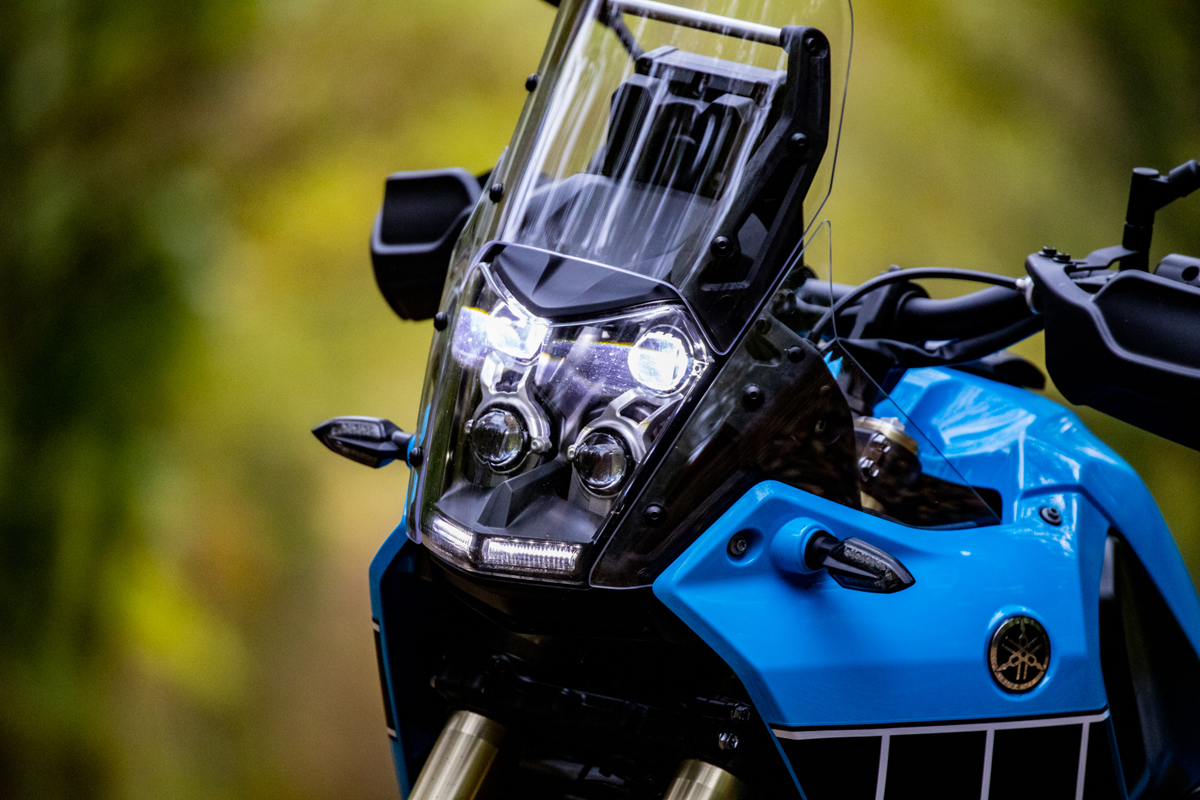
However, once onboard, the Ténéré 700 feels slim, compact and well-balanced. The riding position is perfectly natural and relaxed, with enough space for a tall rider to feel comfortable.
The Ténéré is not a hyper-sophisticated machine, with a lot of connectivity features that bring their own headaches when you try to get them to work. It remains a kind of back-to-basics motorcycle—exactly like the Ténéré was back in the mid-80s.
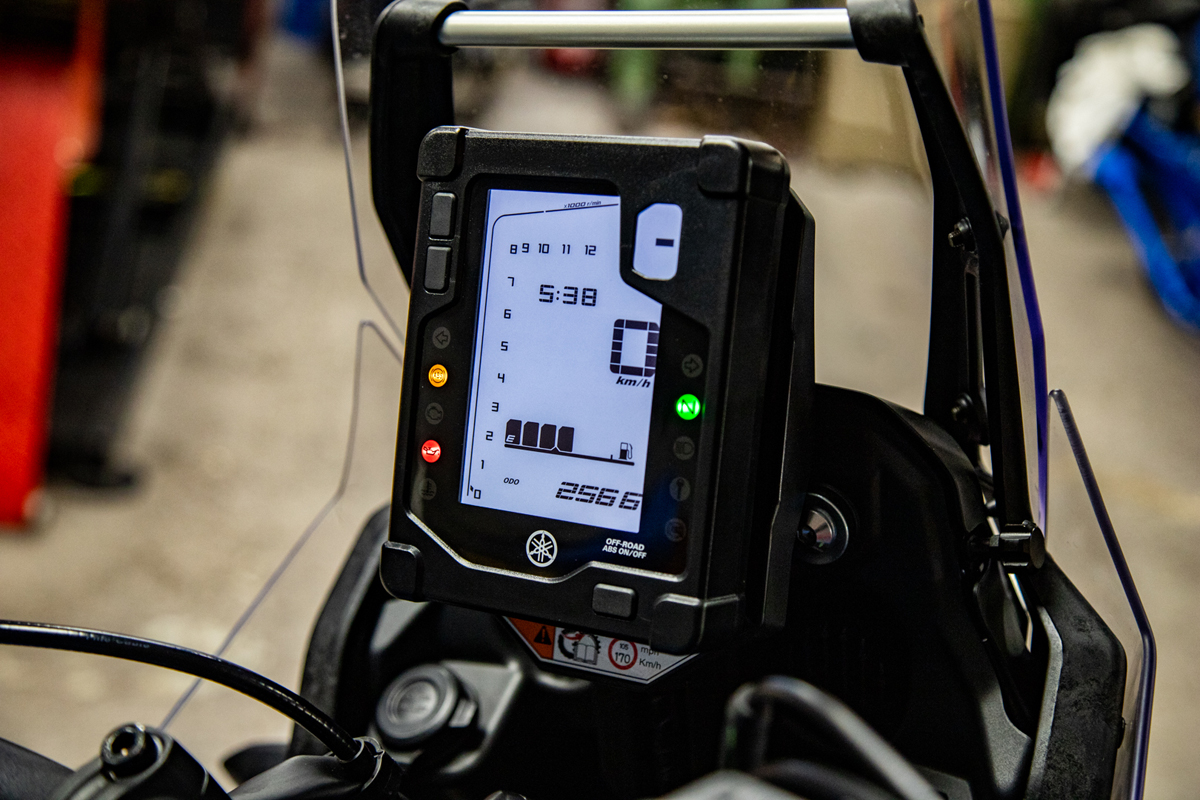
Here, there’s just a vertical dashboard that looks a bit like an e-book reader. It’s a bit weird at first, but then you realise that you just get the information that you need and that’s most important. The switchgear is easy to use, and the levers are adjustable too.
Is the Ténéré 700 a great road bike?
I’d say yes, although, let’s be frank: the old Ténéré from the mid-80s was actually much more comfortable. From the thick seat to the plush suspension, for long-distance trips, I’d rather consider the old one. At least for a second—just enough time to remember I’ll have to cope with a slower cruising speed, more engine vibrations and soft brakes.
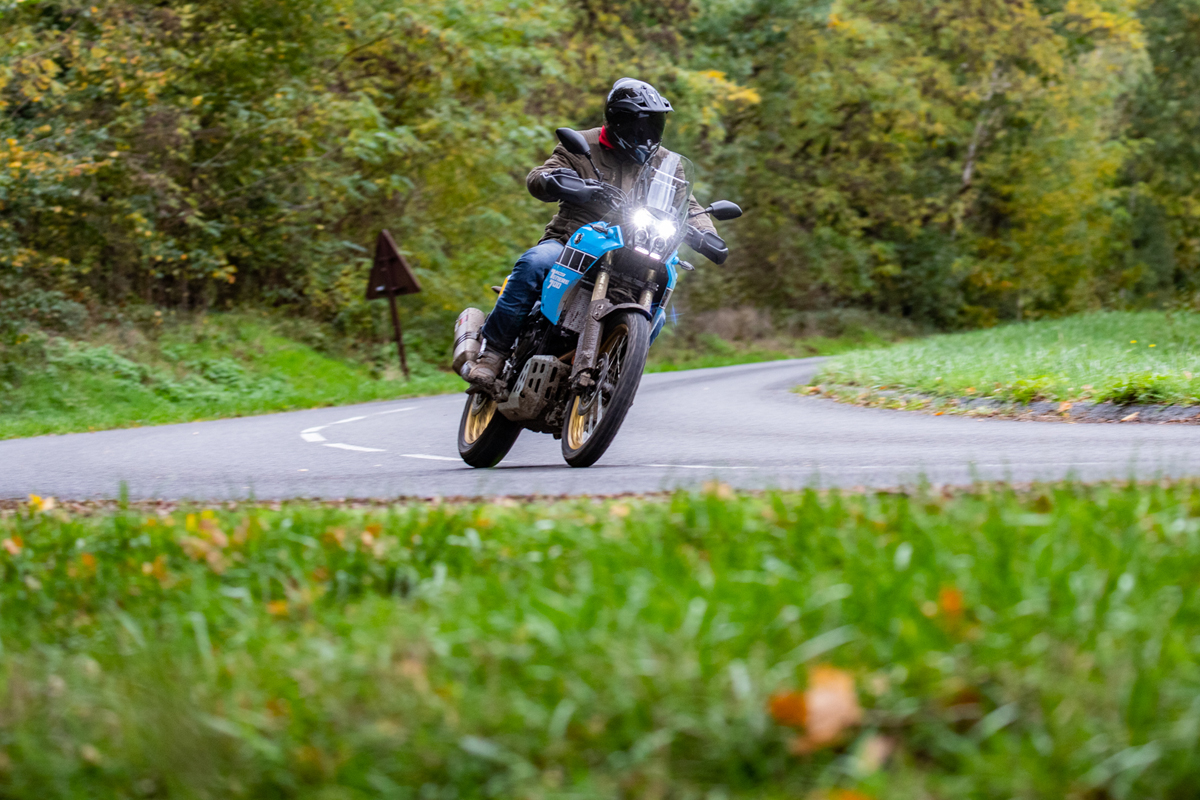
The Ténéré 700 is a bit on the firm side; the ‘enduro’ seat does little to improve the situation, and the fully adjustable rear shock is never quite plush enough. But the upside is that the T7 offers a mix of feeling and precision never before seen on old dual-sport bikes.
Stability is not an issue at any speed, because the ‘CP2’ engine is just such a gem, with a perfect combination of smoothness and mid-range generosity. Some might think that 72 horses are not enough; let me enlighten you. This engine is not just brilliant—it also has a great personality, and the capability to deliver pure riding pleasure, whether cruising gently or hard on the throttle.
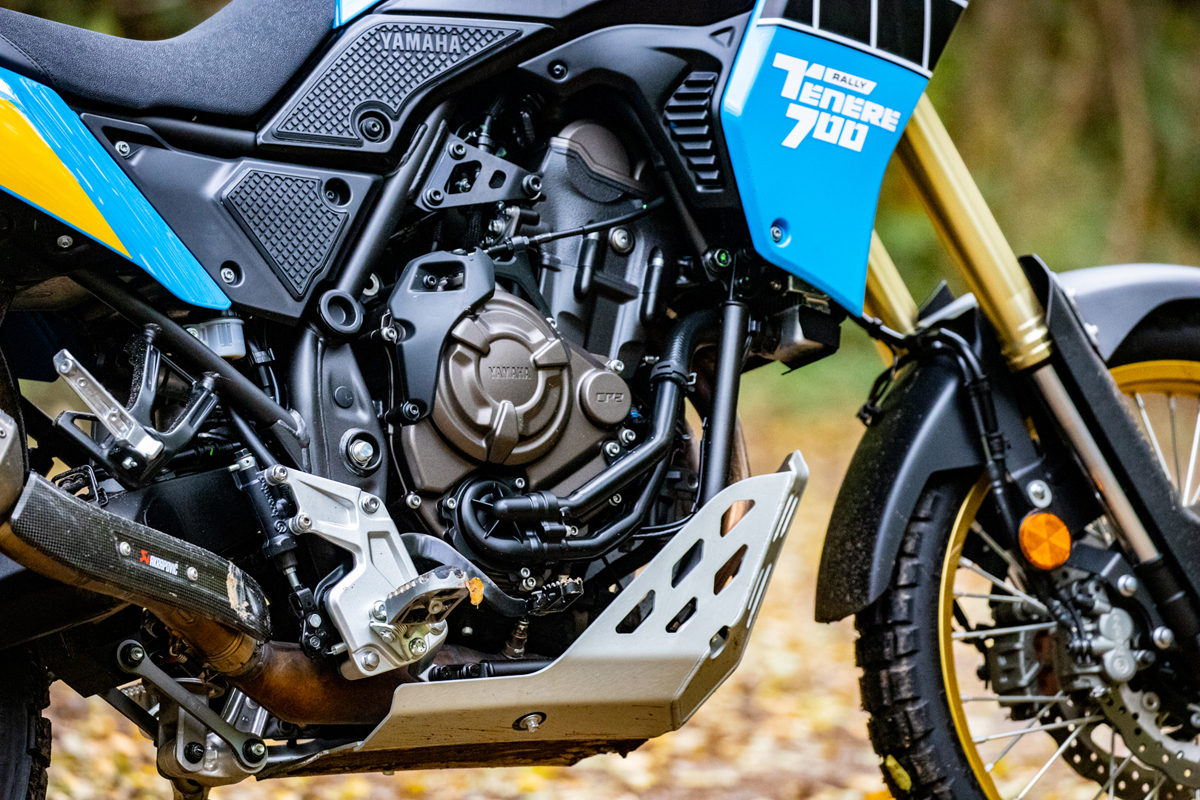
For those who dare, a 160 km/h cruising speed is not impossible, despite some small vibrations through the foot-pegs and around the fuel tank at high revs. Of course, I enjoyed the Ténéré 700 more on the scenic back roads, at a slower pace—but the blue bike can fly when it wants to.
On a long trip, I recorded a fuel consumption of 5,4 l/100 km. So with the 18-litre fuel tank, 300-plus kilometre trips are completely doable. At speed, the brakes could deliver a bit more bite, though.
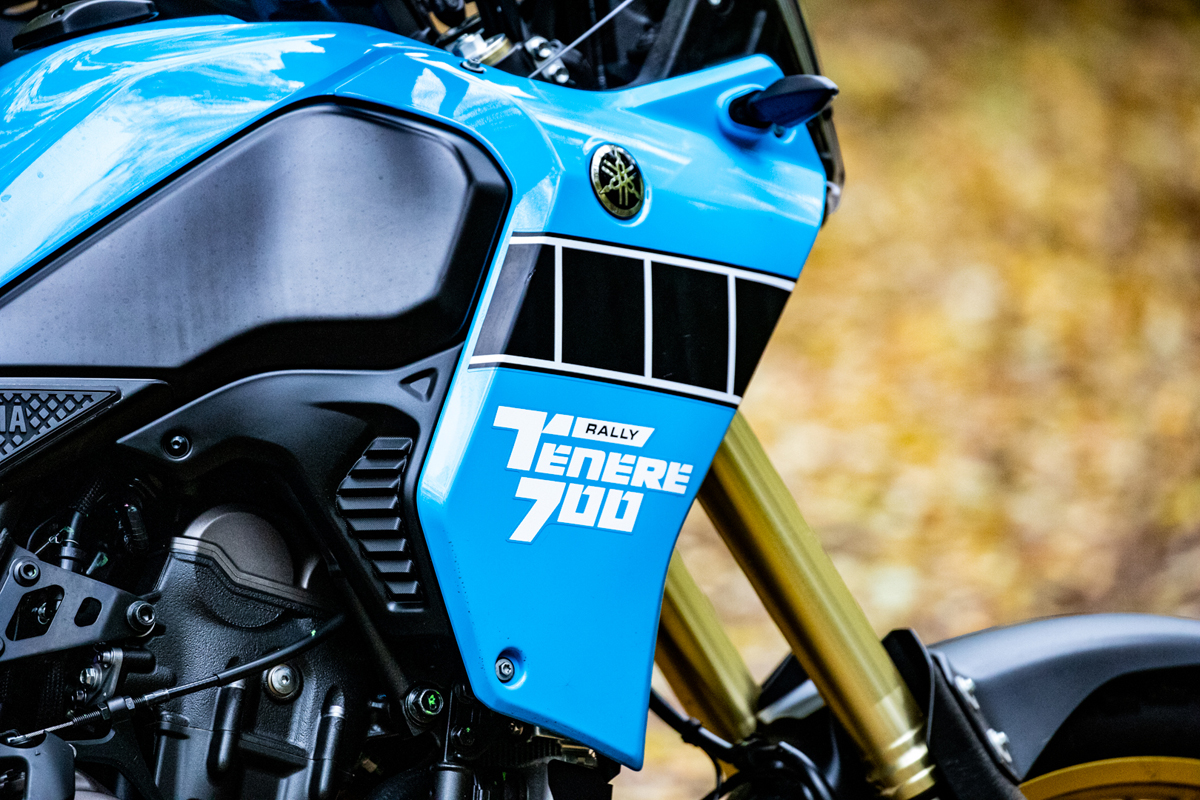
Is the Ténéré 700 a great dirt bike?
I was happy to cover at least half of the bike with fresh mud, while riding in some wet and greasy French forest roads. The speeds were not the same as you’d reach on some of South Africa’s long and fast dirt roads, but I enjoyed many things about the T7 in the dirt.
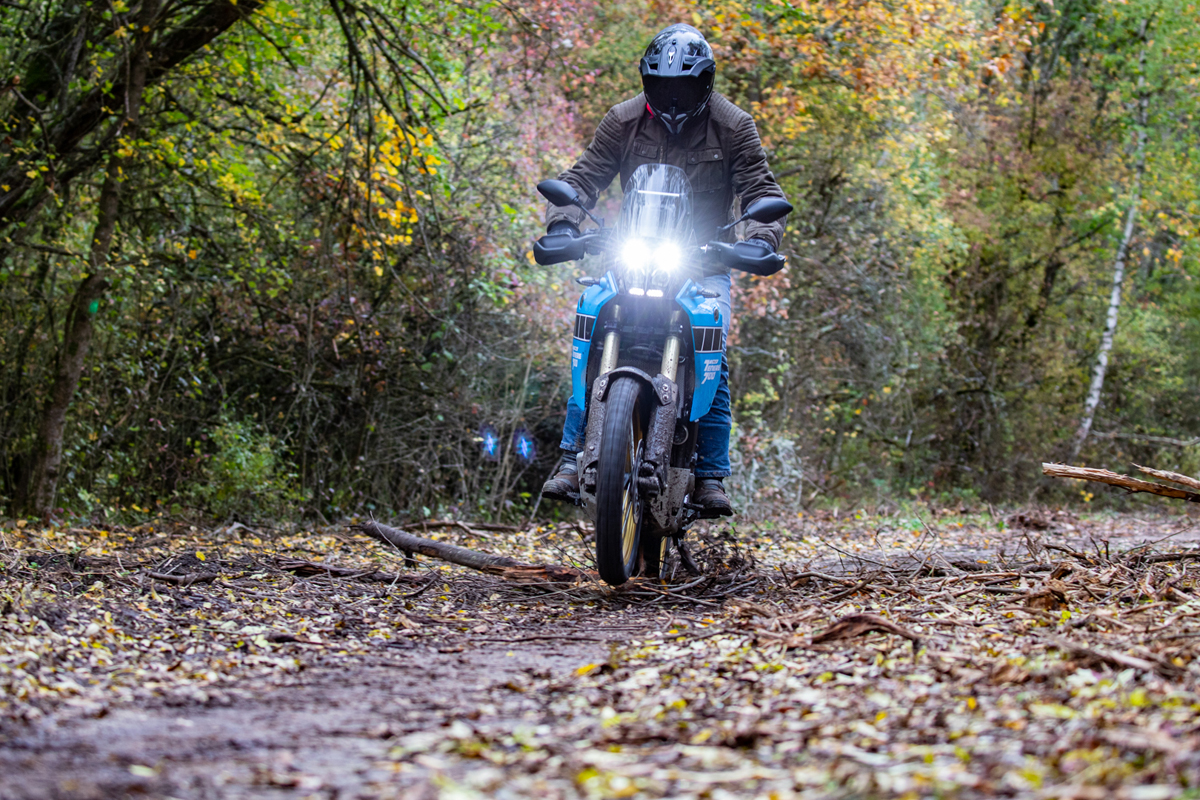
The riding position works just as well when you stand up, with the chunky foot pegs keeping you stable on the Ténéré. The Pirelli Scorpion MTR tyres were another good surprise, as they provided some decent grip, even when reining in some big hills.
Of course, there aren’t many electronics here to help you (besides the ABS, which can be disabled)—but the bike is narrow, compact and not too powerful, so it’s quite easy to handle. I found the rear shock better off-road than on the tar, and the front fork offered confidence in any situation.
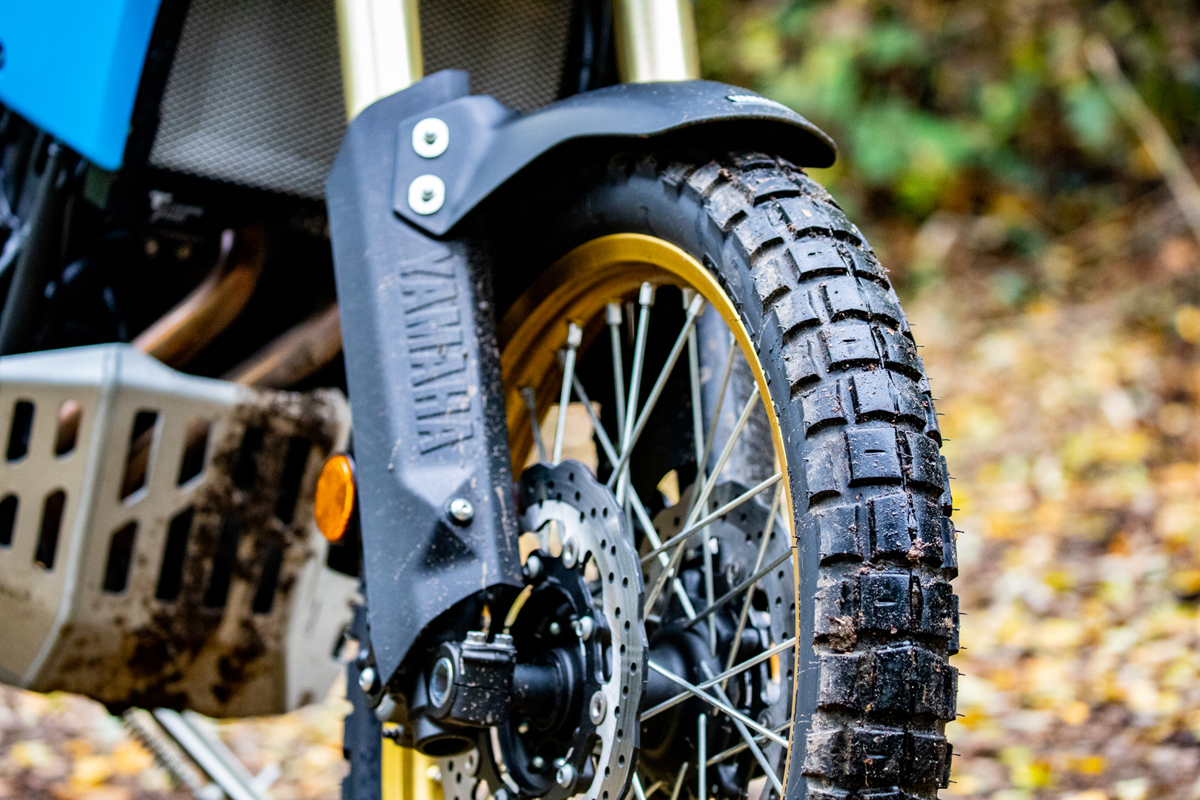
The Yamaha’s fun parallel twin is peppy enough to encourage some prompt front wheel lift when needed, so my playtime in the forest was a lot of fun. I also took a second look on the brakes; they might lack some initial bite on the road, but they were very progressive and easy to operate on the dirt.
Is the Ténéré 700 the perfect grandson of the 1980s legend?
It definitely is. Especially the Rally Edition, which adds good looks and a highly desirable livery for a touch of history to tick every last box.
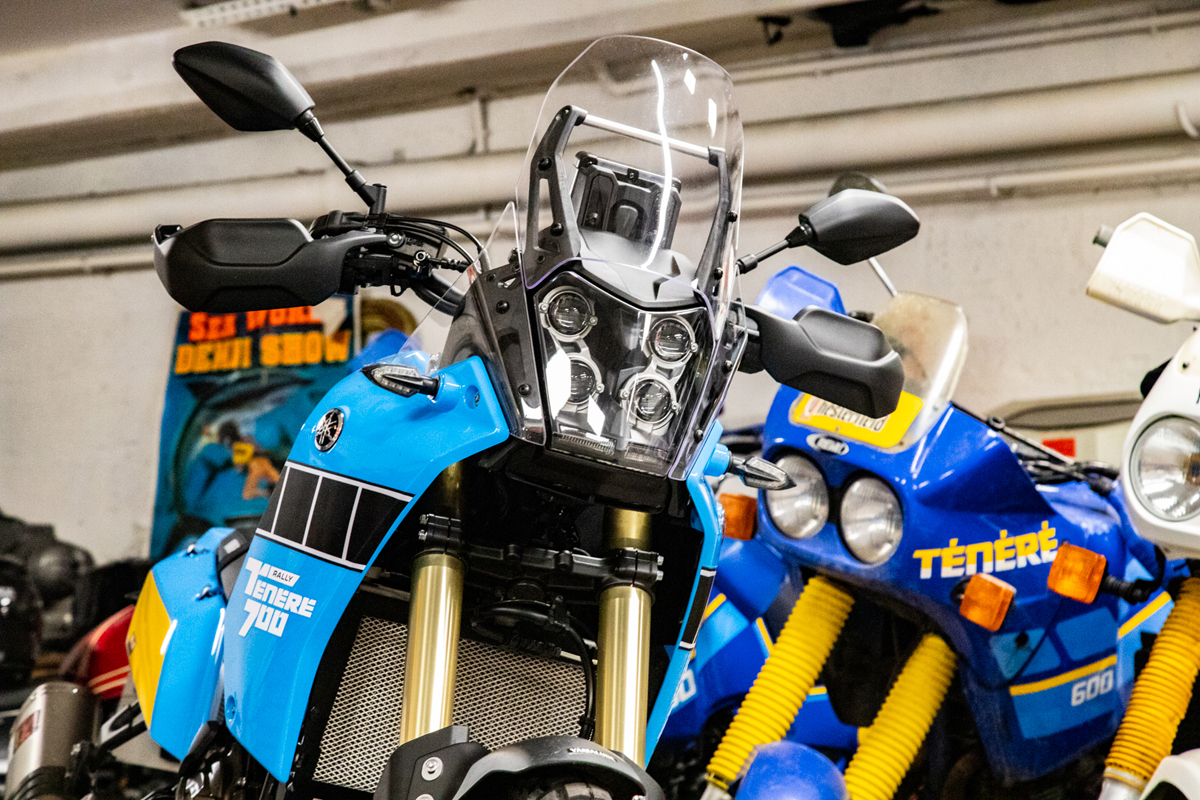
My only concern is that back in the 80s, the Ténéré was worth about five months’ salary in France. Nowadays, the Ténéré 700 Rally Edition tips the scale more towards 10 months’ salary.
So was adventure riding easier before? You tell me…
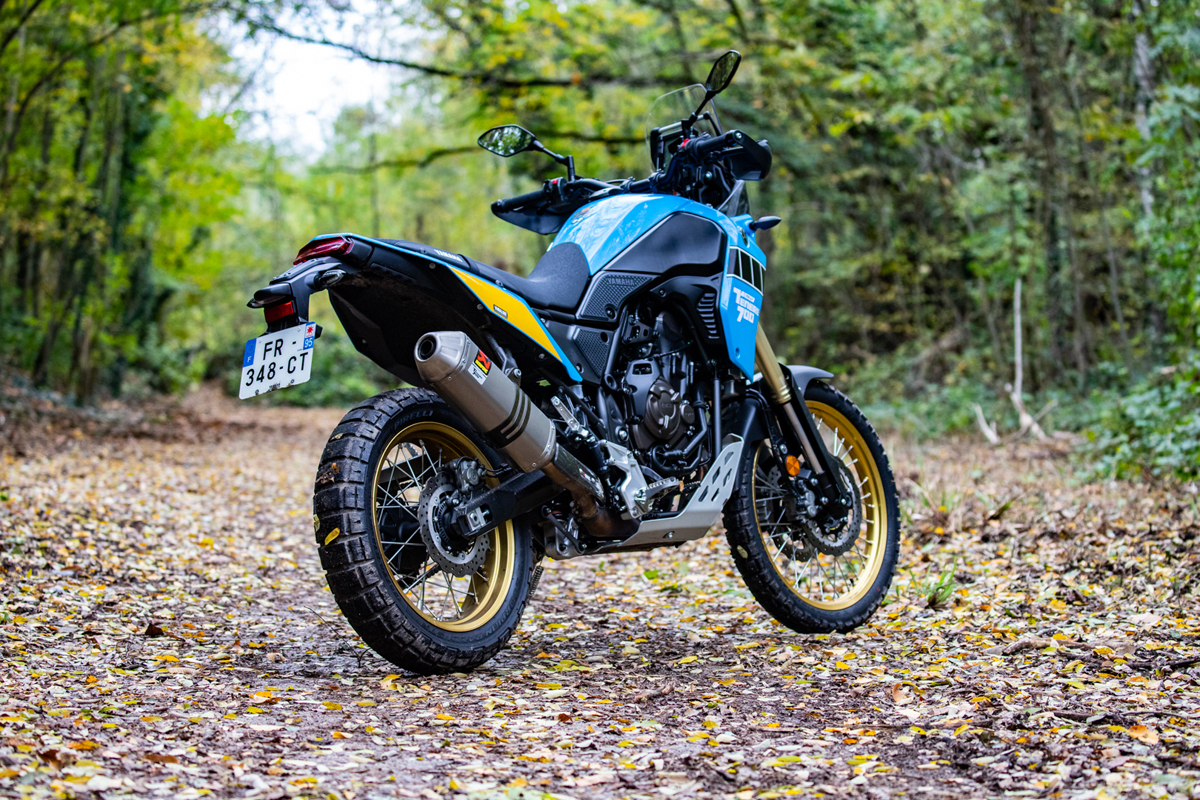
Yamaha Ténéré 700
For more information on the bike that we tested in this article, click on the link below…




